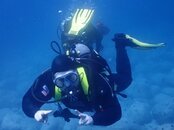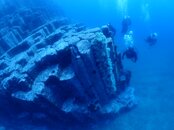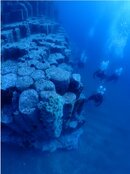Sorry for the delay in replying, been out diving.This is a nice description, thanks! So when you do your bubble check at 6m, what your are doing is setting the valve so that at that specific pressure, you will maintain that buoyancy. If you lift your arm, it will not vent, but if you were to rise one meter, with your arm raised, it should then vent, correct?
effectively, you are maintaining your “neutral buoyancy” pressure by setting the valve, which just means you don’t have to worry as much about your arm position? Even if you lift your arm, it should only dump to your “neutral buoyancy” inflation level?
the theory is clear to me, it’s harder to explain I guess. Really helpful!
The shoulder valve's proper name is a constant volume valve.
I don’t lift my arm up, but like @Storker roll to the left so the valve is uppermost. One of the reasons I have buddies on my right, so when I roll to see what they’re doing I don’t inadvertently lose gas from the suit.
For the odd meter +/- I don't add or release gas but move to using the upper or lower lung capacity, something you can learn.







